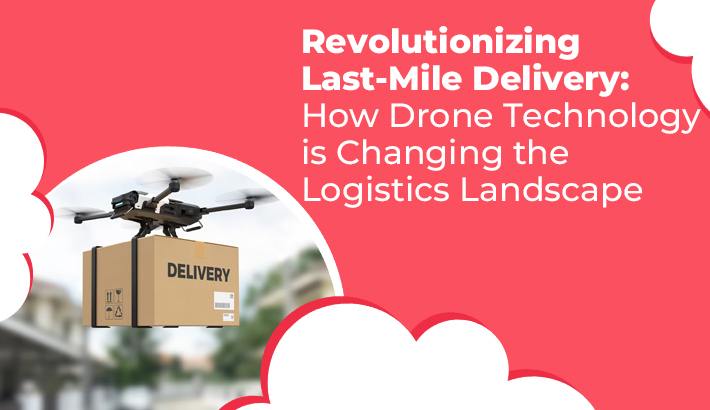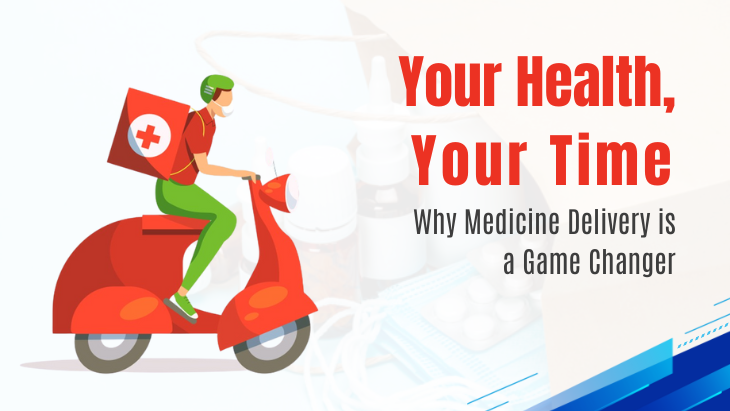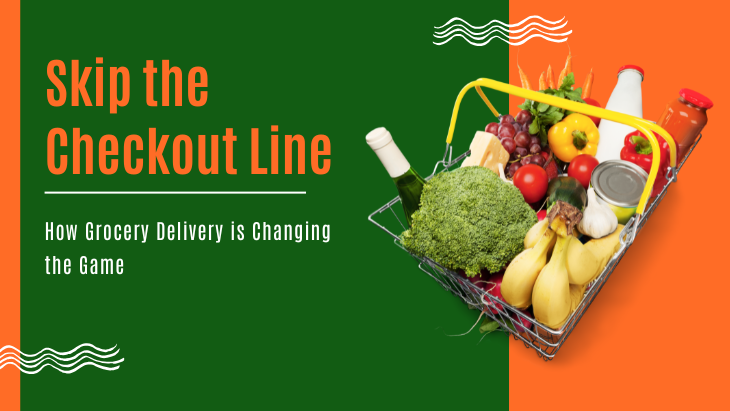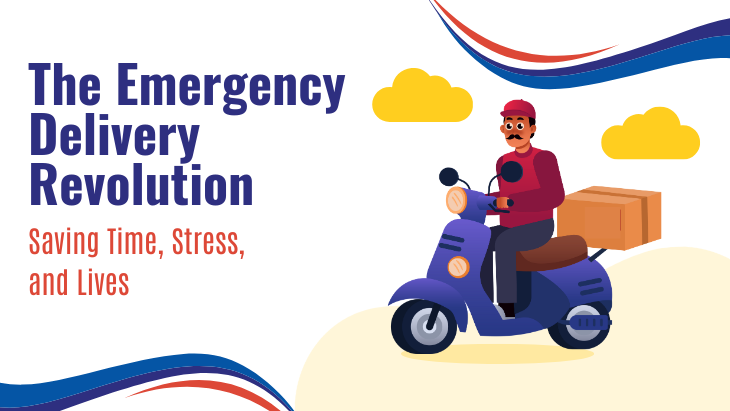Revolutionizing Last-Mile Delivery: How Drone Technology is Changing the Logistics Landscape The logistics landscape is undergoing a transformative shift with the emergence of drone technology. Companies worldwide are leveraging this innovative solution to revolutionize last-mile delivery. With the ability to navigate through congested cities and remote areas with ease, drones are reshaping the way goods are transported. Incorporating advanced technologies like artificial intelligence and machine learning, these unmanned aerial vehicles offer faster and more efficient delivery options. By eliminating the need for traditional ground transportation, companies can overcome the challenges of traffic congestion, limited manpower, and unpredictable weather conditions. Drone technology provides numerous advantages for businesses and consumers alike. It enables the delivery of packages in hard-to-reach locations, reduces shipping costs, and enhances delivery speed. Moreover, drones have minimal impact on the environment, making them a sustainable alternative to traditional logistics methods. As companies strive to provide seamless and convenient delivery experiences, drone technology has emerged as a game-changer in the logistics industry. By embracing this revolutionary approach, businesses can enhance their operational efficiency, customer satisfaction, and overall competitiveness. Stay tuned as we delve deeper into the transformative impact of drone technology in last-mile delivery and its implications for the future of logistics.
The Current Challenges of Last-Mile Delivery
Last-mile delivery refers to the final stage of the package delivery process, where goods are transported from a distribution center to the end consumer. Despite advancements in technology and logistics, last-mile delivery still faces several challenges. These include traffic congestion, limited manpower, and unpredictable weather conditions. The traditional methods of using trucks or vans for last-mile delivery are often inefficient and time-consuming.
Additionally, delivering packages to remote or hard-to-reach locations can be a logistical nightmare. These challenges not only impact businesses by increasing costs and reducing customer satisfaction but also affect consumers who rely on swift, reliable delivery services.
However, with the emergence of innovative drone technology, the last-mile delivery landscape is on the cusp of transformation. Drones offer fast, efficient, and cost-effective delivery options, overcoming the limitations of traditional methods. By leveraging advanced technologies like artificial intelligence and machine learning, companies can optimize their delivery operations and provide a seamless customer experience.
The Potential of Drone Technology in Last-Mile Delivery
The potential of drone technology in last-mile delivery is immense, as it offers solutions to the limitations of traditional delivery methods. Drones have the ability to navigate through congested cities and remote areas with ease, which helps overcome challenges such as traffic congestion and limited manpower. Additionally, drones can provide faster and more efficient delivery options by eliminating the need for traditional ground transportation. With the incorporation of advanced technologies like artificial intelligence and machine learning, drones can optimize delivery routes and ensure accurate and timely drop-offs.
Drones offer numerous benefits in last-mile delivery, including increased speed, improved efficiency, and cost-effectiveness. They can significantly reduce delivery times by flying directly to the destination, avoiding traffic and other obstacles that ground vehicles encounter. Drones also have the potential to lower operational costs for businesses, as they require less manpower and infrastructure compared to traditional delivery methods.
However, it's important to note that there are range and capacity limitations with drone delivery. Drones have a limited range due to battery life, and their carrying capacity is restricted to lightweight packages. These limitations need to be considered when implementing drone delivery services. Nonetheless, with ongoing advancements in technology, there is room for improvement in these areas as well.
Current Examples and Case Studies of Drone Delivery Services
In recent years, several companies and organizations have been experimenting with drone delivery services and showcasing the potential of this innovative technology. One standout example is Amazon Prime Air, which has been testing their drone delivery service since 2016. Their goal is to deliver packages weighing under 5 pounds to customers within 30 minutes. Another notable case study is Wing, an Alphabet subsidiary, which conducted a pilot project in Australia in 2019. They successfully delivered everyday items like food, medicine, and even coffee to customers in a suburban area, reducing delivery times and improving convenience. In Rwanda, Zipline has developed a drone delivery system for medical supplies, including blood and vaccines, to remote areas with limited access to healthcare. Their autonomous drones have made thousands of lifesaving deliveries since 2016. These examples highlight the potential of drone technology in overcoming logistical challenges and revolutionizing last-mile delivery in various industries. However, they also shed light on the regulatory and technical hurdles that need to be addressed for widespread implementation.
The Future of Drone Technology in Last-Mile Delivery
The future of drone technology in last-mile delivery holds immense potential for transforming the logistics industry.
Analysis of the Potential Impact of Drone Technology on the Logistics Industry:
Drones have the ability to revolutionize last-mile delivery by overcoming the challenges of traffic congestion, limited manpower, and unpredictable weather conditions. With the capability to navigate through congested cities and reach remote areas with ease, drones offer faster and more efficient delivery options. This can significantly impact the logistics industry by reducing costs, improving customer satisfaction, and increasing operational efficiency for businesses.
Exploration of Future Advancements in Drone Technology for Last-mile Delivery
As technology continues to advance, we can expect to see even more sophisticated drones with increased payload capacities, longer flight ranges, and improved battery life. Additionally, the incorporation of advanced technologies such as artificial intelligence and machine learning will enable drones to adapt and optimize their delivery routes in real-time, further enhancing efficiency.
Discussion on the Regulatory and Legal Challenges Surrounding Drone Delivery
Despite the potential benefits, there are numerous regulatory and legal challenges surrounding drone delivery. Issues such as flight regulations, privacy concerns, and airspace management need to be addressed to ensure safe and secure operations. Governments and regulatory authorities are working towards establishing guidelines and frameworks to facilitate the integration of drones into the existing logistics infrastructure.
Speculation on the Potential Integration of Drone Delivery with Other Emerging Rechnologies
In the future, we may see the integration of drone delivery with other emerging technologies, such as autonomous vehicles and AI. This could lead to a seamless and interconnected logistics system, where drones work in collaboration with ground-based vehicles to optimize route planning and maximize efficiency. Artificial intelligence can also play a crucial role in enabling drones to make autonomous decisions, further enhancing their capabilities.
Overall, the future of drone technology in last-mile delivery is promising. With ongoing advancements and the resolution of regulatory challenges, drones are set to transform the way goods are transported, providing faster, more efficient, and sustainable delivery options.
Implications for Businesses and Consumers
Drone technology has significant implications for both businesses and consumers in the realm of last-mile delivery. For businesses, the adoption of drone technology can greatly enhance their operational efficiency. Drones are capable of delivering packages faster than traditional methods, reducing the delivery time for customers. This can lead to increased customer satisfaction and loyalty, as well as a competitive edge for businesses in the market. Additionally, drones can access hard-to-reach locations more easily, allowing businesses to expand their delivery services to remote areas or areas with challenging terrain.
From a consumer perspective, drone delivery offers numerous benefits. First and foremost, it provides faster delivery times, allowing customers to receive their packages promptly. This is particularly advantageous for time-sensitive products or urgent deliveries. Moreover, drone delivery offers added convenience as customers can receive their packages at their doorstep without the need to be present or sign for a delivery. This is particularly helpful for individuals who may have busy schedules or limited mobility.
Furthermore, drone technology has the potential to reduce shipping costs for both businesses and consumers. By eliminating the need for traditional ground transportation, businesses can save on fuel and labor costs. These savings can be passed on to consumers, resulting in more affordable doorstep delivery services.
Overall, the implications of drone technology for businesses and consumers in last-mile delivery are significant. It provides businesses with a competitive advantage and operational efficiency, while offering consumers fast and convenient delivery options at a lower cost. As drone technology continues to evolve, it is expected to revolutionize the logistics industry and reshape the way goods are delivered.
The Advantages of Drone Technology in Last-Mile Delivery: Revolutionizing Logistics
Drone technology offers a wide range of advantages for last-mile delivery, revolutionizing the logistics industry and providing numerous benefits for businesses and consumers. Here are five key advantages of utilizing drones for delivery:
1. Enhanced Speed and Efficiency: Drones can significantly reduce delivery times by bypassing traffic congestion and taking direct routes to the destination. With their ability to fly at high speeds, drones can ensure faster deliveries, especially in urban areas where traffic can be a major obstacle. This increased efficiency translates into improved customer satisfaction and a more competitive edge for businesses.
2. Access to Remote or Hard-to-Reach Locations: Drones can reach locations that are difficult for traditional delivery methods, such as remote areas, rugged terrains, or areas with limited infrastructure. They can navigate through obstacles and deliver packages to customers in remote locations, making it easier to reach customers who would otherwise be inaccessible.
3. Cost Savings: Utilizing drones for last-mile delivery can result in significant cost savings for businesses. With traditional delivery methods, companies have to bear expenses such as fuel costs, vehicle maintenance, and labor. Drones eliminate the need for these resources, reducing operational costs and increasing profitability.
4. Environmental Sustainability: Drones have a minimal environmental impact as they produce zero emissions during delivery. By reducing the need for traditional delivery vehicles, drone technology promotes sustainable practices that contribute to a cleaner and greener environment.
5. Flexibility and Scalability: Drones provide flexibility and scalability in last-mile delivery services. Businesses can easily scale their drone fleet as demand increases, ensuring efficient deliveries during peak times. Additionally, drones can operate 24/7, offering round-the-clock delivery options to customers.
Overall, the advantages of drone technology in last-mile delivery result in improved operational efficiency, faster deliveries, cost savings, environmental sustainability, and enhanced customer satisfaction, all of which make it a game-changer for the logistics industry.
Conclusion
In conclusion, drone technology is revolutionizing the last-mile delivery landscape and transforming the logistics industry. With the ability to navigate through congested cities and remote areas, drones offer faster, more efficient, and cost-effective delivery options. They overcome the challenges of traffic congestion, limited manpower, and unpredictable weather conditions, providing seamless and convenient delivery experiences for businesses and consumers. The potential of drone technology in last-mile delivery is immense, with ongoing advancements in payload capacities, flight ranges, battery life, and the incorporation of artificial intelligence and machine learning. However, there are regulatory and legal challenges that need to be addressed to ensure safe and secure operations. Despite these challenges, the implications of drone technology for businesses and consumers are significant, including enhanced operational efficiency, increased customer satisfaction, and lower shipping costs. As drone technology continues to evolve, it holds promising potential for reshaping the way goods are transported and revolutionizing the logistics industry.
Frequently Asked Question's (FAQ's)
Q1. How do drones navigate through congested cities and remote areas?
Drones are equipped with advanced technologies such as GPS and obstacle avoidance systems that enable them to navigate through congested cities and remote areas. They use real-time mapping and route planning algorithms to find the most efficient path to their destination, avoiding obstacles along the way.
Q2. What kind of packages can drones deliver?
Currently, drones have limited carrying capacities and are mainly used for delivering lightweight packages. The weight limit varies depending on the specific drone model, but it typically ranges from a few pounds to around 5-10 pounds.
Q3. Are there any limitations to drone delivery?
Yes, there are limitations to drone delivery. Drones have limited battery life, which restricts their range and flight time. They also have limited carrying capacities, meaning they can only handle lightweight packages. Additionally, weather conditions such as strong winds, rain, or snow can affect the ability of drones to fly and make deliveries safely.
Q4. Are there any privacy concerns regarding drone delivery?
Yes, privacy concerns are one of the challenges associated with drone delivery. Drones equipped with cameras can potentially invade people's privacy if not regulated properly. To address this, regulations are being developed to ensure that drones do not violate privacy rights and that data collected during deliveries is handled appropriately.
Q5. Are there any regulations governing drone delivery?
Yes, there are regulations and guidelines set by regulatory authorities that govern drone delivery. These regulations address issues such as flight restrictions, licensing requirements for drone pilots, and safety measures to ensure the safe and secure operation of drones.
Q6. How do drones ensure accurate and timely drop-offs?
Drones are equipped with advanced technologies such as artificial intelligence and machine learning algorithms that enable them to optimize their delivery routes and adapt to changing circumstances in real-time. These technologies help drones ensure accurate and timely drop-offs by continuously analyzing data and making adjustments to their flight path.
Q7. What are some examples of companies using drone delivery?
Some notable examples include Amazon Prime Air, Wing (an Alphabet subsidiary), and Zipline. Amazon has been testing their drone delivery service since 2016, Wing conducted a successful pilot project in Australia in 2019, and Zipline has developed a drone delivery system for medical supplies in Rwanda.
Q8. How do drones handle returns or failed deliveries?
Drones can be utilized for reverse logistics, including returns or failed deliveries. If a delivery cannot be completed for any reason, the drone can be programmed to return to the designated pick-up location or a nearby safe landing area to facilitate the return process.
Q9. Are there any cost savings associated with drone delivery?
Yes, drone delivery can result in significant cost savings for businesses. By eliminating the need for traditional ground transportation, companies can save on fuel, vehicle maintenance, and labor costs. These savings can be passed on to consumers, resulting in more affordable delivery services.
Q10. How can businesses implement drone delivery services?
Businesses can implement drone delivery services by working with drone service providers or developing their in-house drone delivery capabilities. They would need to comply with relevant regulations, establish safety protocols, and invest in the necessary technology and training for drone pilots and ground crew.







Post Comments